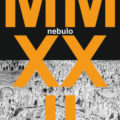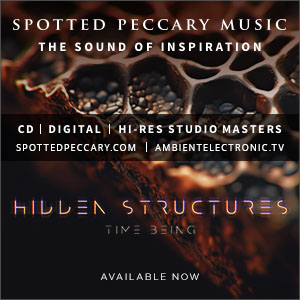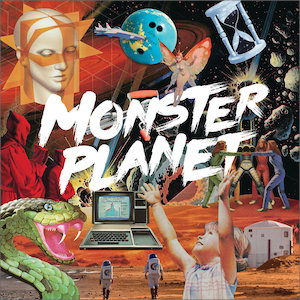Blurring the transitional lines of coded linguistics and human touch, these outputs are sincere, colorful, and at times, thought provoking.

Generative and calculative renders
Synalegg joins the likes of Core Alter, Calum Gunn and Notein on computer music label 3OP with their latest release Violynt Tropiqs, a 7-tracker comprising of raw audio captures from the Parisian’s self-developed system. These generative and calculative renders provide big room atmospherics surrounded in a peppering of hyper-drive IDM. Blurring the transitional lines of coded linguistics and human touch, these outputs are sincere, colorful, and at times, thought provoking.
It is a daunting feeling (especially as a producer myself) to feel like if this code were available on a commercial level, or more so in the hands of some pop-up tech company that the next generation of producers would simply lose all contact with artistry. However, this already exists in the form of loops, presets and whatnot—the characteristics, at least currently, come from the human interaction. After all—even with Synalegg’s system, they personally decided which captures to use—I digress.
In the right hands, it is exciting to hear and something to truly marvel as each track possesses craft—be it the melodic stutters of “Mace Plover,” the bone crunching saturation in “Minpop Gunfdtal,” delicate synthesis during “Rilver Parakeet,” or skittered breaks popping through “Orango Shame.”
3OP, whilst a fairly new label, is pushing boundaries and gathering computer artists worldwide to contribute innovative technically mastered music. They are certainly a label to keep an eye on as their roster continues to grow. Most recently the label saw Qebo & William Fields get together for a live performance release.
It’s important to distinguish between the human and the machine
To dive in a little further, Igloo had the chance to ask Synalegg a few questions on the release. They talk about their process and the influence of historic experimentation:
Igloo :: Thank you Synalegg for joining us for an interview. Can you tell us a little about who you are and where you’re from and what got you into making music?
Synalegg :: I’m Synalegg, I live in France and I make electronic music, motivated by a century of artistic experimentation, from Luigi Russolo’s Intonarumori to Autechre’s discography, from Pierre Schaeffer’s experiments to Manfred Mohr’s algorithmic drawings.
I am familiar with audio experimentation in interfaces such as Reaktor, Max/MSP and live coding environments. Could you shed some light on your own generative compositional system using Puredata—is it similar in build or something we can relate to?
All technical means are more or less equal, but Puredata has a paradigm that I particularly appreciate, it’s like doing architecture with Legos. I use it to build my own production tools and little by little larger systems. They evolve from project to project, I often start from scratch but for some time now I’ve been trying to develop programs capable of generating complete musical material autonomously. They are articulated around the main steps of a musical production (writing a score, generating and processing sound, mixing, etc.) and are automated to make the parameters evolve over time.
From the release label 3OP, they mention in a simplified pipeline ‘his custom patch can synthesize, compose and produce a fully fledged, release-ready piece of music by clicking a button. Unaltered autonomous computed art at its finest.’ This sounds fascinating, is it really true?
3OP refers here to my previous project Computer Series, where the approach was to exclude myself completely from the execution process. The main part of the work was to design and build a system, “a machine that makes the art” (Sol Lewitt). Thanks to the computer’s ability to combine data, the generation of the music could be done by clicking a button. After sorting and discarding a large number of irrelevant results, I compiled a selection of 10 raw audio captures, without subsequent modification, as Pierre Barbaud did. But 3OP also says “no matter how it was done”, which I totally agree with.
How do you inject enough character that generative feels like it has a human touch?
I think it’s important to distinguish between the human and the machine and vice versa, they have to be complementary and in no way imitate each other. For Violynt Tropiqs, my process remains the same: I design a system, the computer executes it. But the simple fact of tightening up my environment by focusing on certain aspects to be explored in particular gave (perhaps) more “musical” results if you like. That’s what led me this time to optimize at times the audio captures in terms of structure and transitions at the end, a human is more relevant than a computer for that.
Is there a varying percentage of how much you tinker with settings for example and how easy is it to make a small change to something you would like to remove?
Actually, all the parameters are modifiable in my programs, in ranges chosen by myself when defining the aesthetics of my algorithms. But it’s precisely from these choices that I emancipate myself. Driven by their reflexes and habits, a human being may only explore a small part of their ideas or concepts, whereas the computer, freed from any format, any culture, can go to the end of the process implemented. Vera Molnar speaks of chance as “an accelerator of ideas that we might not have had at all, or perhaps otherwise.” I introduce randomness into my systems and listen to what happens, what is revealed.
Do you take this approach in music making into a live performance at all? I can imagine some very wild moments on stage if you are leaving the computer calculate the output there and then!
As I’m not a performer at all but rather a laboratory worker who proceeds step by step in a fragmented time, my systems are not flexible enough at the moment to perform live in an interesting way in my opinion. But of course I leave the door open for this kind of experimentation in the future.
Lastly, how does 2022 look for you—can we expect more releases or will you be taking some time to develop your work further? Thank you again for taking the time to talk to Igloo Magazine.
Indeed, there may be releases as I continue to progress the human-machine duo, to see where this interaction takes me. Maybe I will also produce music in a completely different way afterwards, I don’t lock myself into one method. It rather depends on what I discover while experimenting, “the researcher starts by finding” (Pierre Schaeffer).
Thank you very much for your interest.
Violynt Tropiqs is available on 3OP. [Bandcamp]



















![Luke’s Anger :: Ceiling Walker EP (Love Love) — [concise]](https://igloomag.com/wp/wp-content/uploads/2025/04/lukes-anger-ceiling-walker-vinyl_feat-75x75.jpg)

![Ndorfik & madebyitself :: Solos EP (People Can Listen) — [concise]](https://igloomag.com/wp/wp-content/uploads/2025/04/ndorfik-madebyitself-solos_feat-75x75.jpg)





